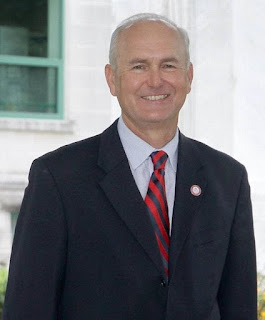Yet let’s be honest. Nobody’s going to remember Oscar Gamble for any of that.
WHEN
IT COMES to Gamble, a hard-hitting outfielder of the 1970s who died Wednesday
at age 68, he’s known for the ‘fro – as in the incredibly huge afro hairstyle
he wore back in the days when such hair was stylish.
In
Gamble’s case, he wore his afro huge. Various reports indicate his hair stuck
about eight inches out from his head. It gave the impression of an incredibly
huge head – almost as though Gamble were a real-life, African-American version
of those bobblehead dolls that are popular with many baseball fans.
Which
is kind of ironic that Gamble wound up playing two stints with the New York Yankees
– a team notorious for their restrictions on ballplayers and their hairstyles.
They made him cut it.
Which
means during that one year Gamble was with the White Sox, we got to see a
version of the ‘fro that was trying to re-grow itself.
 |
| Afro untethered by ball cap |
WE
CERTAINLY NEVER got to see anything close to what was depicted on that 1976
baseball card showing Gamble traded from the Cleveland Indians (where his hair
grew free and wild) to Yankees pinstripes.
For
what it’s worth, Gamble was part of Yankees teams that won American League
championships in 1976 and 1981. He was that guy who rotated between playing
outfield and designated hitter, which allowed the Yankees to fit more
ballplayers into the lineup than usual.
Following
that first stint, Gamble was traded to the White Sox (along with assorted minor
league ballplayers including future Cy Young Award winner LaMarr Hoyt) in
exchange for shortstop Bucky Dent – who helped the Yankees win a pair of World
Series titles and created his own baseball iconic moment that causes his name
to be taken in vain in Boston.
 |
| Afro trying to restore itself |
Dent
wanted big money contracts, more than then-owner Bill Veeck was willing to pay.
Of course, Gamble also wanted a big money contract, and Veeck couldn’t afford
that either. Which caused him to label Gamble and outfielder Richie Zisk as the
original “rent-a-players.”
IN
GAMBLE’S CASE, it worked for the White Sox. His .297 batting average, with 31
home runs and 83 runs batted in were a key part of that ’77 White Sox team that
stayed in first place through mid-August.
He
then went to the San Diego Padres because then-owner Ray Kroc gave him the big
money contract that he played under for the rest of his ballplaying career.
 |
| Oscar, in the beginning |
Which
began in 1969 when he played part of the season with the Cubs (one of many
ballplayers signed by scout Buck O’Neil whom the Cubs foolishly let get away) and
ended in 1985 when he returned to the White Sox for one final season.
I
remember Gamble for his ability to mash the ball. Not exactly a guy who you’d
put in the field for stellar defense. But someone who could put runs on the
scoreboard with his 200 career home runs and 666 runs batted in, along with 610
bases on balls.
BUT
THERE ALSO was the hair. The afro that causes his memory to live on whenever
people discuss what became of professional baseball during the 1970s and the
game, in many ways, finally started catching up to trends of society at-large.
 |
| Gamble, at the end |
I’m
sure the reaction to the sight of Gamble’s hair back in those days said more about
you as an individual rather than anything about Oscar himself.
Which
is why it was always humorous to see photographs of Gamble in more recent
years. He went bald.
But
the memory of the ‘fro will linger on in the minds of those of us to whom the Bicentennial
was a reality of life – and not just something we learned about while skimming
a history book.
-30-





































